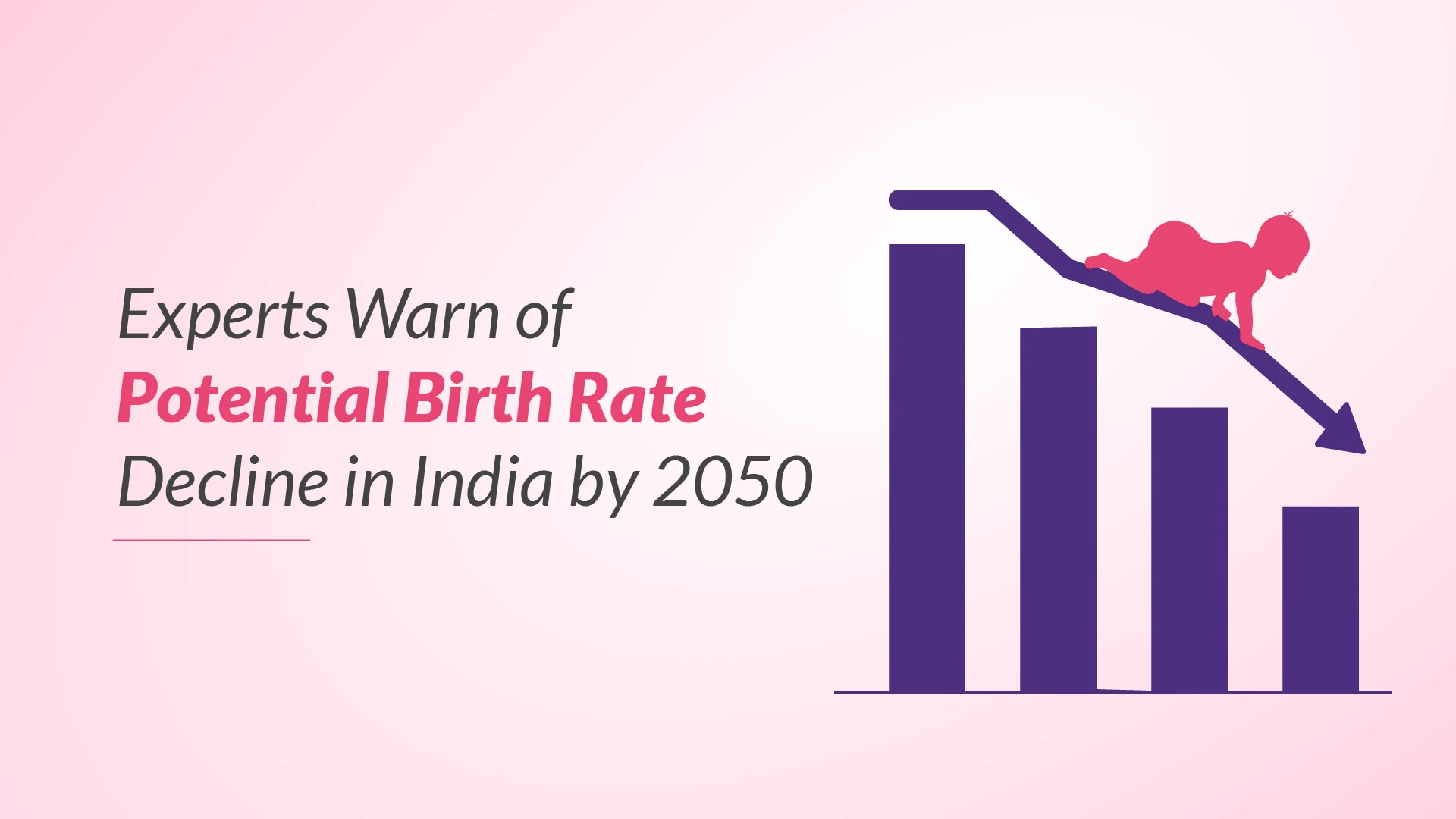India, the world’s second-most populous country, faces a pressing challenge as experts predict a significant decline in birth rates by 2050. Recent studies reveal that India’s fertility rate is expected to fall below the replacement level of 1.7 births per woman, a critical threshold needed to maintain population stability. This shift raises concerns about the future demographic and economic landscape of the country. How will this impact India’s future generations and its economic growth? Despite these concerns, there are reasons to remain hopeful.
By understanding the factors behind the potential birth rate decline and exploring effective strategies, India can work towards a balanced demographic future.
Also read: Is Male Fertility Higher or Lower Compared to Female Fertility?
Understanding India’s Current Birth Rate
India’s birth rate has been on a downward trajectory for several decades. In 1960, the average number of children per woman was around 5.0. By 2015, this figure had decreased to approximately 2.45. This decline in the birth rate reflects changing societal values, economic conditions, and advancements in healthcare. As a result, the live population of India has seen significant shifts. A low birth rate can impact various aspects of society, from economic growth to social structures.
Related Read: Did You Know 1 in 6 People Globally Are Affected by Infertility?
Factors Contributing to the Predicted Decline in India’s Fertility Rate 2050
Several key factors are driving the anticipated birth rate decline in India by 2050:
Economic Growth and Urbanization
Economic growth and urbanization are significant factors contributing to the decline in India’s fertility rate. As India becomes more urbanized and industrialized, the cost of living in cities has increased. Many people in urban areas are prioritizing career development and personal lifestyle over having larger families. This shift is leading to smaller family sizes.
Education and Women’s Empowerment
Education, particularly for women, has a profound impact on fertility rates. As more women attain higher levels of education and pursue careers, they often choose to delay marriage and childbearing. Educated women are more likely to make informed decisions about family planning, which can contribute to a decline in world population growth by leading to smaller family sizes.
Healthcare Advances
Advancements in healthcare have improved family planning options and overall child health. With improved access to medical services, couples can make more deliberate decisions about the number of children they want. Increased life expectancy and reduced infant mortality rates also influence family size choices.
Cultural Shifts
Cultural attitudes toward family size are evolving. Traditional views on large families are changing, particularly in urban and educated populations. There is a growing acceptance of smaller families as societal norms shift towards individualism and career focus.
Potential Implications of a Decline in India’s Fertility Rate
A declining fertility rate can have several implications for India. Economically, a shrinking workforce could impact productivity and growth. With fewer young people entering the job market, there may be labor shortages and increased pressure on the working-age population to support an aging demographic.
Socially, a reduced birth rate may affect family structures and support systems. With fewer children, traditional family support networks might weaken, potentially impacting the elderly and altering social dynamics. Additionally, changes in India’s population size can influence demand for education, healthcare, and housing.
Mitigation Strategies to Increase Fertility Rate
Several strategies can be considered to address the decline in the birth rate.
Encouraging Balanced Family Planning
Promoting balanced family planning through education and awareness helps couples make informed choices. Providing resources and support for family planning ensures that families can plan their children in accordance with their personal and economic circumstances.
Incentivizing Childbirth: Tax Breaks, Maternity and Paternity Benefits
Offering financial incentives such as enhanced maternity/paternity benefits and tax breaks can encourage families to have more children. These incentives help offset the costs associated with raising children and make larger families more feasible.
Investing in Healthcare and Child Welfare
Investing in healthcare and child welfare can create a supportive environment for families. Improved healthcare services, childcare support, and education resources can make raising children more manageable and attractive to prospective parents.
Promoting Work-Life Balance to Make Parenting More Feasible
Encouraging policies that promote work-life balance, such as flexible working hours and parental leave, can make parenting more manageable. By creating a more family-friendly work environment, individuals may feel more comfortable choosing to have larger families.
Long-Term Outlook for India’s Population Growth
The long-term outlook for India’s population growth will depend on how effectively the country addresses the factors contributing to the declining fertility rate. While current projections suggest a potential population decline in India, proactive measures and strategic planning can help stabilize the population and support sustainable growth. By focusing on economic, social, and healthcare improvements, India can manage demographic changes and continue its development.
Find Hope and Solutions for Female Infertility and Male Infertility — Explore Our Comprehensive Services
IVF Treatment
IUI Treatment
ICSI Treatment
PICSI Treatment
Fertility Preservation Service
Blastocyst Culture & Transfer Treatment
Conclusion
The potential decline in India’s birth rate by 2050 presents significant challenges but also opportunities for thoughtful intervention. Addressing the factors contributing to this birth rate decline and implementing effective strategies can help balance demographic trends. As discussions about whether India’s population trends become more relevant, Ferty9 Fertility Center is committed to supporting individuals and families in navigating these changes. By offering expert guidance and comprehensive support, we aim to contribute to a balanced and prosperous demographic future for India.





























